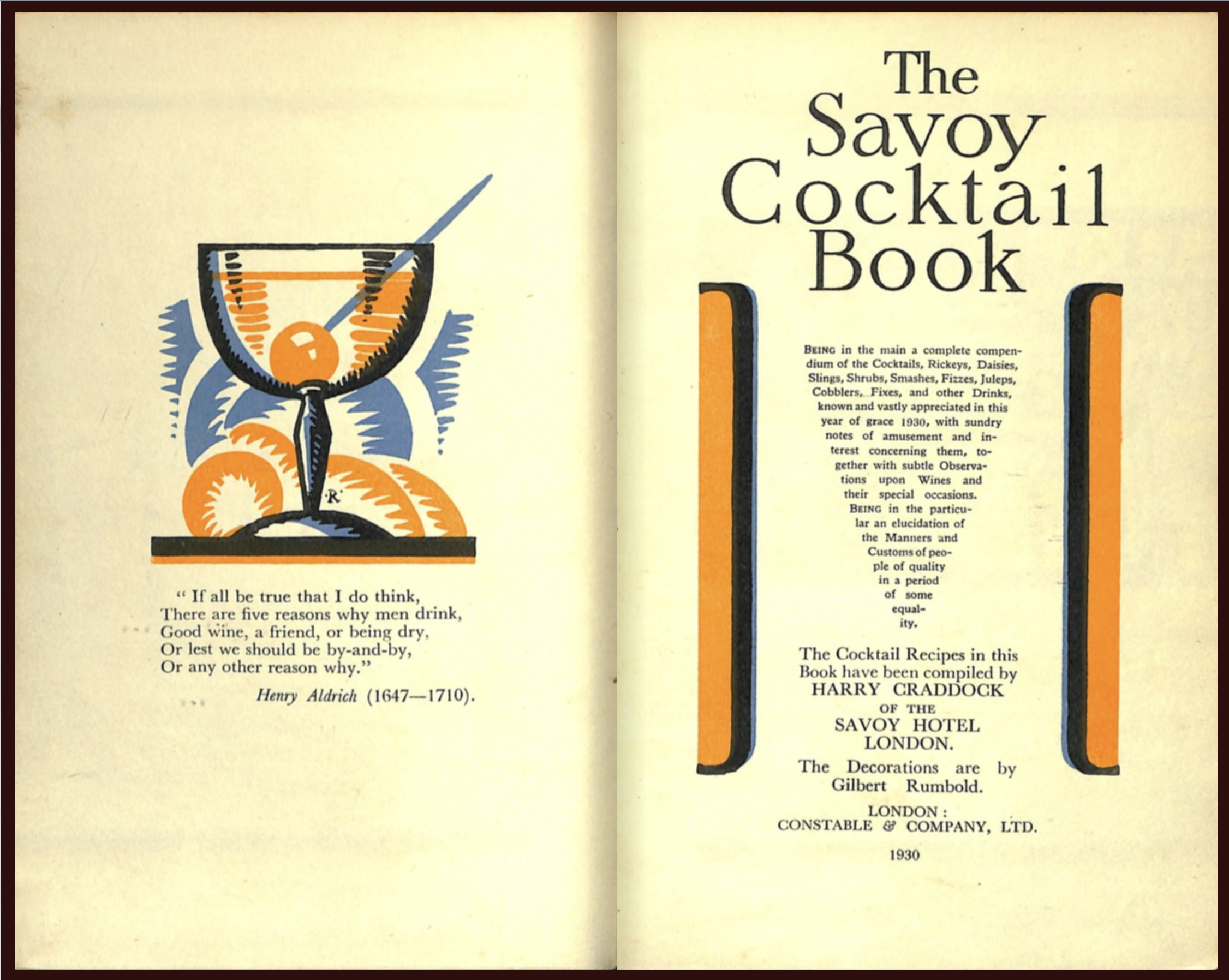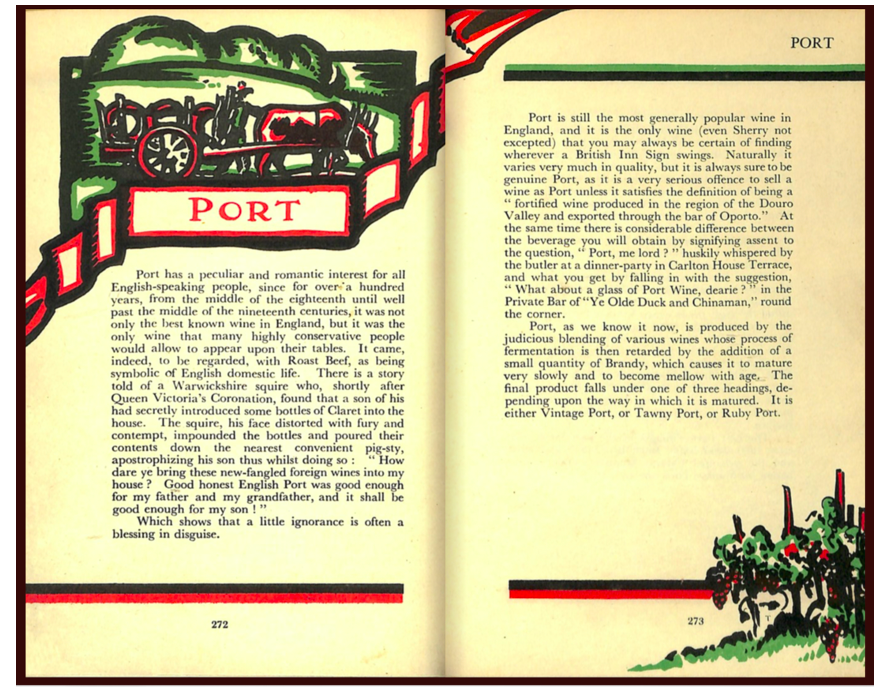When Cocktails Wore Tuxedos: Revisiting the Port-Fueled Elegance of the Savoy Hotel
In 1930, amidst the glittering swirl of London's roaring nightlife, The Savoy Cocktail Book was born. Authored by Harry Craddock, the dapper and legendary head bartender of the Savoy Hotel’s American Bar, and published by Constable & Company Ltd., the book quickly became a bible for bartenders and bon vivants alike. Lavishly illustrated by the brilliant Gilbert Rumbold, whose Art Deco flourishes brought flapper glamour and modernist cheek to every page, the book remains a masterpiece of both mixology and design.
More than a collection of over 750 cocktails, The Savoy Cocktail Book is a snapshot of an era—the fizz and flair of 1930s London, where American Prohibition exiles mingled with aristocrats, artists, and jazz musicians under crystal chandeliers and swirling cigarette smoke.
Craddock’s Legacy Behind the Bar
Harry Craddock’s journey to the Savoy is as rich as his cocktails. Born in England in 1876, he spent the early part of his career in the United States, mixing drinks at New York’s Knickerbocker Hotel until Prohibition drove him back to Britain in 1920. At the Savoy, he transformed the American Bar into a legend, creating enduring classics like the Corpse Reviver #2 and the White Lady. When asked how best to enjoy a cocktail, Craddock famously replied: "Quickly, while it’s laughing at you."
His personality was as dry and witty as the cocktails he stirred—an alchemist in white tie who believed every cocktail was a performance.
The Illustrated Spirit
The visual magic of The Savoy Cocktail Book is thanks to Gilbert Rumbold, whose whimsical and daring illustrations are as intoxicating as the drinks themselves. His pages dance with jazz-age energy—flappers in feathered headbands, racing automobiles, and leaping figures in formalwear. Each drawing turns the act of making a cocktail into theatre, emphasizing Craddock’s philosophy that cocktails were cultural expressions as much as they were beverages.
A Port in Every Storm
Among the many treasures in the book are 25+ cocktails made with port—sometimes overlooked in today’s bars but beloved in the early 20th century. Recipes like the Broken Spur blend white port, gin, vermouth, anisette, and egg yolk for a rich, velvety drink that balances sweetness, botanicals, and creamy texture.
There’s even a brief summary of port and its history and popularity in England.
Perhaps more timeless, though not as prominently featured in the book, is the White Port and Tonic—a drink that has regained popularity in recent years. Typically made with chilled white port, tonic water, and a citrus garnish, it’s a light, refreshing aperitif that's particularly popular in Portugal. Its simplicity belies its sophistication, and its effervescence feels perfectly aligned with Craddock’s playful elegance.
Tales from the Savoy
The hotel itself is nearly as storied as the cocktails it inspired. Opened in 1889 as Britain’s first luxury hotel, the Savoy introduced electric lighting, lifts, and en-suite bathrooms to London hospitality. It quickly became a magnet for the cultural elite—from Oscar Wilde to Marlene Dietrich.
One of the Savoy’s more legendary tales comes from a dinner party in 1898, when millionaire Woolf Joel insisted on dining despite being one of thirteen at the table—a number considered unlucky. Weeks later, he was fatally shot. Since then, the Savoy has seated a three-foot-tall black cat statue named “Kaspar” at tables of thirteen, ensuring no guest dines in ominous company. That blend of superstition, theatricality, and hospitality is part of what made the Savoy—and its bar—so enchanting.
A Lasting Influence
Today, The Savoy Cocktail Book remains more than just a relic of a bygone era. It is a living document, still reprinted and revered by bartenders around the globe. Its pages sparkle with the timeless energy of invention and delight—offering not only recipes, but a philosophy of joy, elegance, and curiosity.
Craddock, Rumbold, and the Savoy itself created something that endures: a celebration of flavor, of art, and of the rituals that bring people together. Whether you’re sipping a Broken Spur or a simple White Port and Tonic, you’re partaking in that legacy—one glass at a time.



